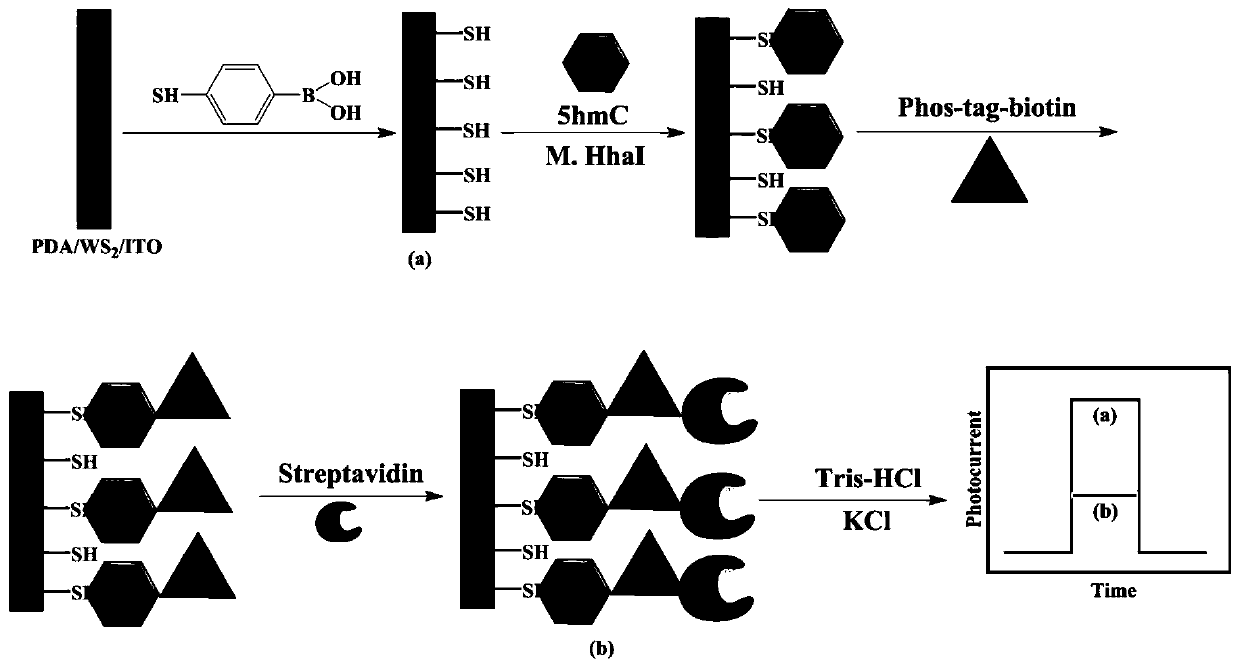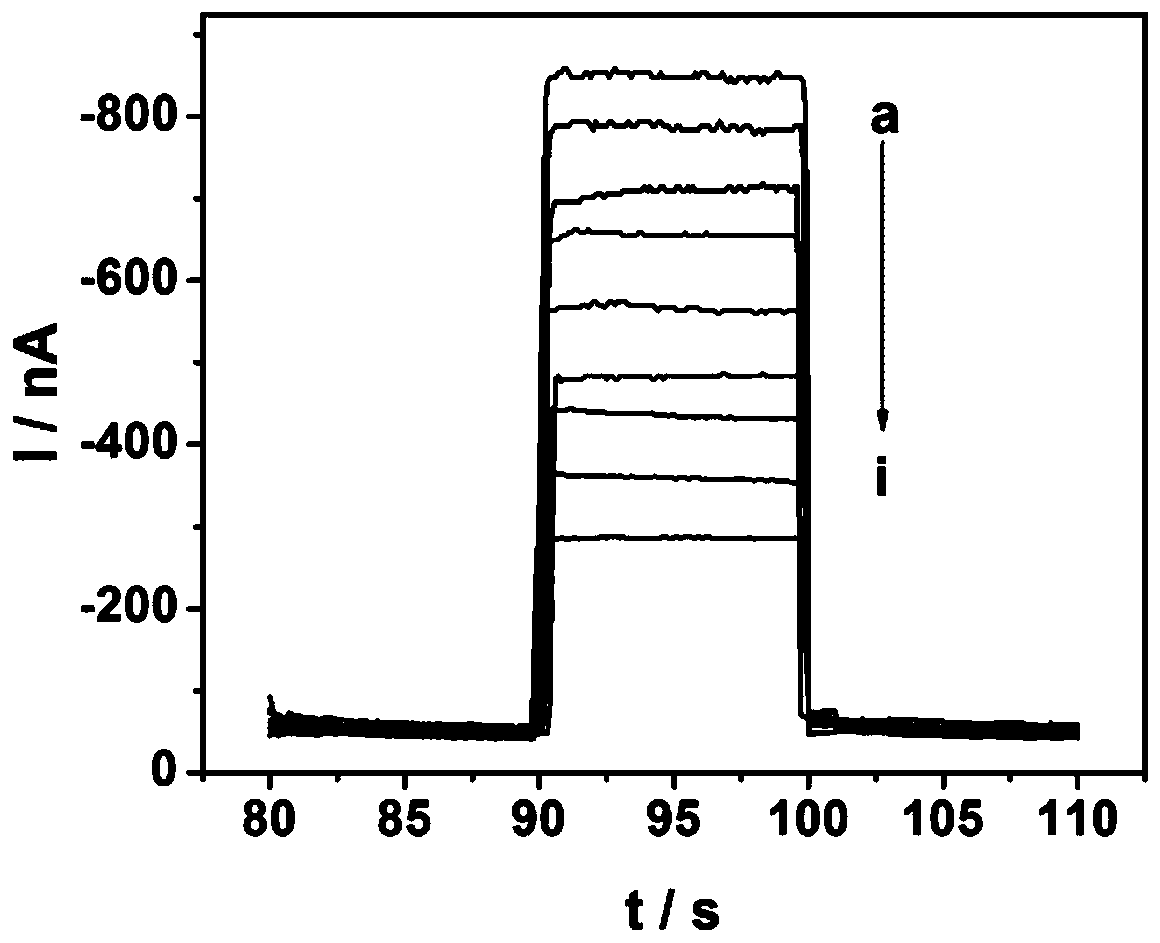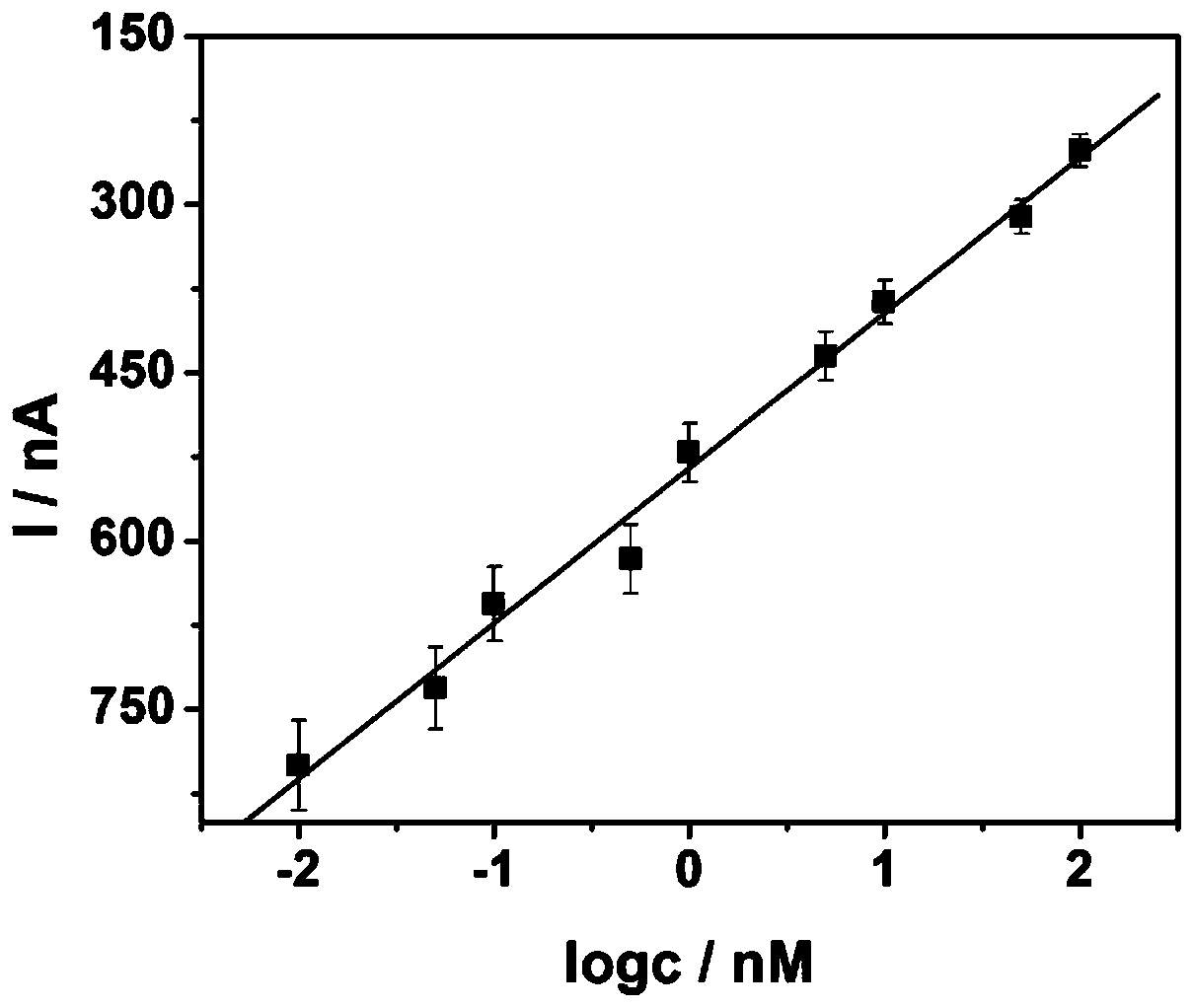A photoelectrochemical biosensor for detecting 5-hydroxymethylcytosine deoxyribonucleotides and its preparation method
A technology of deoxyribonucleotides and hydroxymethylcytosine, which is applied in the field of photoelectrochemical biosensors and its preparation, can solve the problems of expensive, cumbersome operation steps, and the need for professional operators, and achieve easy operation and high detection selectivity , The effect of improving the detection sensitivity
- Summary
- Abstract
- Description
- Claims
- Application Information
AI Technical Summary
Problems solved by technology
Method used
Image
Examples
preparation example Construction
[0050] (1) Preparation of polydopamine: Weigh 0.5-1 g of dopamine and dissolve it in 300-600 mL of deionized water. Under magnetic stirring, heat to 45-80°C. Then, 2-4 mL of NaOH solution with a concentration of 0.5-2 M was added. Stand for reaction for 3-8 hours. Centrifuge at 2000-5000rpm to collect the suspension. Then the suspension was centrifuged at 10000-15000 rpm to collect the precipitate. After the precipitate was washed 3-5 times with deionized water, it was vacuum-dried at 60°C.
[0051] (2) Preparation of tungsten sulfide dispersion: weigh 5-250 mg of tungsten sulfide, add it into 50 mL of deionized water, and ultrasonically disperse for 1-3 hours.
[0052] (3) Preparation of polydopamine dispersion: weigh 10-100 mg of polydopamine, add it into 20 mL of deionized water, and disperse by ultrasonic for 1-3 hours.
[0053] (4) ITO electrode pretreatment: divide the ITO conductive glass into 5×1cm 2 , then ultrasonically cleaned with ethanol / NaOH mixture (ratio ...
Embodiment 1
[0068] Embodiment 1: the preparation of polydopamine
[0069] Weigh 0.54 g of dopamine and dissolve it in 300 mL of deionized water. Under magnetic stirring, heat to 50°C. Then, 2 mL of 1 M NaOH solution was added. Stand for reaction for 5 hours. Centrifuge at 4000 rpm to collect the suspension. Then the suspension was centrifuged at 12000 rpm to collect the precipitate. The precipitate was washed three times with deionized water, and then dried under vacuum at 60°C.
Embodiment 2
[0070] Embodiment 2: the preparation of tungsten sulfide dispersion liquid
[0071] Weigh 12 mg of tungsten sulfide, add it into 3 mL of deionized water, and ultrasonically disperse for 1-3 hours.
PUM
| Property | Measurement | Unit |
|---|---|---|
| concentration | aaaaa | aaaaa |
Abstract
Description
Claims
Application Information
 Login to View More
Login to View More - R&D Engineer
- R&D Manager
- IP Professional
- Industry Leading Data Capabilities
- Powerful AI technology
- Patent DNA Extraction
Browse by: Latest US Patents, China's latest patents, Technical Efficacy Thesaurus, Application Domain, Technology Topic, Popular Technical Reports.
© 2024 PatSnap. All rights reserved.Legal|Privacy policy|Modern Slavery Act Transparency Statement|Sitemap|About US| Contact US: help@patsnap.com










